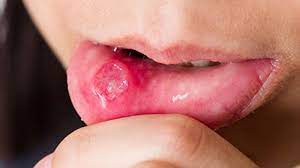Content of the Article
Perioral dermatitis is a condition that causes small reddish bumps to form with dry, flaky skin around the mouth. Redness around the mouth also known as Perioral dermatitis symptoms These include small pus-filled bumps, acne-like redness, burning and itching around the mouth. It heals with a long course of treatment. The cause of the condition is not clearly known.
What is perioral dermatitis?
- Perioral dermatitis occurs around the mouth and appears as a border around the lips.
- The skin becomes red and inflamed.
- Fluid-containing swellings occur and they burst from time to time.
- The skin flakes and becomes dry. It burns slightly and stretches.
- When it spreads around the eyes and nose, it is called periorificial dermatitis.
- 90% of cases are women between the ages of 20 and 45.
- It also occurs in children with a disease such as leukemia that weakens immunity.

What causes perioral dermatitis?
Cause of perioral dermatitis not fully detected. It is thought to be due to the following reasons:
- Prolonged use of corticosteroid infused skin products
- Sun exposure
- Incorrect use of cosmetics
- fluoride in toothpaste
- hormonal fluctuations
- Weakening of immunity
- emotional stress
- licking lips
- Bacterial infection
Perioral dermatitis causes inflammatory changes in the follicles of the epidermis or the outermost layer of the skin. The condition is acne-like bumps or Rosacea It starts out as big sores. It gets worse quickly if left untreated.
Well symptoms of perioral dermatitis What?
What are the symptoms of perioral dermatitis?
Perioral dermatitis symptoms It is as follows:
- It usually appears as red bumps around the mouth and in the folds around the nose.
- It may have a scaly appearance.
- It can also occur in the under eye area, forehead or chin.
- Small bumps may contain pus or fluid inside. Similar to acne.
- Burning or burning, especially as the redness worsens itching such symptoms occur.
Who gets perioral dermatitis?
Some people are more prone to perioral dermatitis. Risk factors for perioral dermatitis include:
- This condition is more common in women.
- using steroid creams or ointments on the face area
- Those with allergies
- Hormonal imbalances
Perioral dermatitis treatment
Treatment of perioral dermatitis symptoms Going to a dermatologist is essential. The following drugs are definitely not drugs that you can administer on your own.
- topical corticosteroid creams (unless the cause of dermatitis is steroid use): Its administration will effectively reduce the symptoms. However, if you stop using it, it's likely to recur.
- Oral tetracyclines: Symptoms have been alleviated when Doxycycline or Minocycline is taken orally.
- topical clindamycin
- Topical pimecrolimus/topical tacrolimus: Suppresses the immune system and inhibits the inflammatory response.
- Metronidazole
- Topical sulfacetamide and sulfur: This is rosacea, acne and seborrheic dermatitis using for. It can be used as a cleanser, cream or lotion. It is an anti-inflammatory and mild keratolytic agent (breaks down the keratin in the skin to help it retain moisture).
Perioral dermatitis natural treatment
There is no herbal treatment that can be applied at home for this condition. Along with the treatment recommended by the dermatologist, you can make the following lifestyle changes.
- Eat well.
- Avoid hot and spicy foods as much as possible.
- Do not consume excessively hot drinks.
- Do not use lipsticks and skin lightening creams. Do not apply operations such as waxing to the affected areas.
- Engage in activities to reduce stress, such as yoga, exercise, and meditation.
- Get enough rest.
How long does it take for perioral dermatitis to heal?
It will take some time for the situation to improve. It is an inconvenience that requires patience. All medications take about 3 weeks to take effect. It may take 8 to 12 weeks for the redness to disappear.
Does perioral dermatitis recur?
The recurrence rate of this condition is high. You can minimize the risk of recurrence by following the lifestyle changes mentioned above whenever you can.
Is perioral dermatitis contagious?
Perioral dermatitis is not contagious. It can be caused by using topical steroid creams, some asthma medications, heavy moisturizers or sunscreens for a long time. It cannot be transmitted from person to person.
Perioral dermatitis symptoms and treatment We told you what you need to know about it. We are curious about what people with this disease are going through and we look forward to your comments.











Judayam asab buzar toshma 3 votes since qiynalaman boshida doctor terapef notogri tashxish qoydi gerpes dep keyin eczema didi asliyat perioralniy dermatitis ekan HOZIRDA since 2 weeks asta sekin ketvoti hali wholelay yoq did not divide. First bowida nose yon pasidan boshlandi hundred qisin bolganga raw juda noqulay toshma hammaga Allah shifo bersin